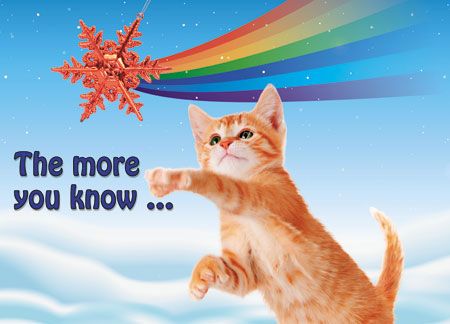Adrenal disorders in cats: The more you know ...
... the more you diagnose. Endocrinology expert Dr. David Bruyette says hypoadrenocorticism and hyperaldosteronism are underdiagnosed and underreported in cats. Time to raise your clinical bar and catch these diagnoses.

(Cat photo from Shutterstock.com)Feline hypoadrenocorticism and hyperaldosteronism are diseases with vague, nebulous clinical signs, says Fetch dvm360 conference educator David Bruyette, DVM, DACVIM, Chief Medical Officer at Anivive Lifesciences and CEO of Veterinary Diagnostic Investigation and Consultation. Because of that, he thinks they are underreported and underdiagnosed in cats. He goes as far as saying that these disorders are so common that if you look for them, you will probably diagnose either disorder in the next month.
Feline Addison's disease
According to Dr. Bruyette, Addison's disease, or hypoadrenocorticism, is seen in middle-aged cats, and there's no sex predilection. In dogs, Addison's is an autoimmune disease, but it's unknown if it's the same in cats, says Dr. Bruyette.
Cats in an addisonian crisis present the same as dogs-in shock, hypovolemic, bradycardic and hyperkalemic-but Dr. Bruyette says most cats with Addison's will not present this way. The biggest problem with Addison's in cats is that the clinical signs are often nonspecific. Addisonian cats are lethargic, dehydrated, ADR ("ain't doing right"), anorectic, have lost weight and occasionally vomit. Signs are episodic. The typical story is that you treat them with fluids and corticosteroids and they get better.
Notice that that is every sick cat on the planet?
Diagnostic pointers. Laboratory abnormalities with feline Addison's include sodium:potassium ratio < 24, hyponatremia and hyperkalemia. Don't forget that effusions of various types can cause the same electrolyte abnormalities and must be ruled out, Dr. Bruyette says. Hypercalcemia is uncommon in cats with Addison's.
The main reason Dr. Bruyette thinks addisonian cats get misdiagnosed is that a lot of them present with azotemia and are diagnosed as having kidney disease. He says that if you have a feline patient that presents with azotemia that resolves after 24 hours of fluid therapy, then kidney disease was not the cause of that azotemia. In these cases, he recommends adrenal testing to the owner to rule out Addison's.
Adrenal stimulation is conducted with cosyntropin (Cortrosyn) at a dose of 5 µg/kg given intravenously, says Dr. Bruyette. Blood samples are collected before and then 60 minutes after administration. Cats with Addison's disease will have undetectable cortisol concentrations both before and after.
Treatment options. Addisonian cats need mineralocorticoid replacement-either oral fludrocortisone (Florinef-Pfizer) or intramuscular injections of desoxycorticosterone (DOCP). The fludrocortisone dosage is 0.1 to 0.2 mg given orally twice a day. Dr. Bruyette says that fludrocortisone does not control sodium concentrations as well as DOCP does-cats often measure low on blood sodium concentrations and have normal blood potassium concentrations. He does not recommend raising the dosage of fludrocortisone to correct hyponatremia if the blood potassium concentration is normal, nor does he recommend salting the cat's food because that will cause polyuria/polydipsia (PU/PD).
Fludrocortisone has glucocorticoid-like activity, so supplemental corticosteroids are usually not required. However, Dr. Bruyette always sends home a small supply of corticosteroids with any addisonian patient and tells clients that if their pet is not feeling well at any time to give a dose of corticosteroid and call the clinic.
The advantage to DOCP is that it does not have to be given daily, is very safe and consistently controls sodium and potassium concentrations better than fludrocortisone. The dosing interval ranges from 21 to 38 days. The disadvantage is that DOCP does not provide any glucocorticoid activity, so supplement corticosteroids must be given in addition to DOCP.
We now pause for a moment of reflection from Dr. Bruyette on how President Kennedy influenced the availability of Addison's disease treatments ...
... and now back to our story ...
Determining the dosage of the glucocorticoid is the most challenging part of treatment, Dr. Bruyette says. Glucocorticoids are dosed to eliminate the side effects of poor appetite and activity level, and the dosage ranges from 1.25 to 2.5 mg/day. Some cats need the full dose daily. Other cats may need the low end of the dose every other day. Dr. Bruyette says give to effect, and if the patient exhibits PU/PD on the dose to lower the dose. Transdermal formulations are available.
What about a monthly methylprednisolone injection? Dr. Bruyette discourages this practice because absorption is variable, and, over time, methylprednisolone injections lead to insulin resistance and development of Type II diabetes.

You. Can. Do. This!
At Fetch dvm360 conference, we're the support system you need. With every conference this year, we intend to nurture your mind (meaning quality CE for days) while also encouraging you to take stock of your physical and emotional health. Register now.
Feline hyperaldosteronism
If there is a winner in the underdiagnosed feline hormonal disorders category, hyperaldosteronism caused by aldosterone-secreting adrenal tumors or bilateral adrenal hyperplasia would receive the gold medal. Hyperaldosteronism is much more common than we suspect, Dr. Bruyette says, and affected cats tend to be older and often have concurrent endocrinopathies or renal disease. He says if you look for it, you will find it-there might be one sitting in your waiting room right now!
Diagnostic pointers. Classic hyperaldosteronism in cats presents with muscle weakness, lethargy, anorexia and cervical ventroflexion due to profound hypokalemia. Retinal detachment can occur secondary to hypertension. Laboratory abnormalities, including severe hypokalemia, high creatinine phosphokinase activity, and hypertension, are what clue us into diagnosis, says Dr. Bruyette. Blood sodium concentrations are usually normal. Hyperaldosteronism is usually missed when hypokalemia and hypertension are mistakenly associated with renal disease.
If you suspect you are dealing with a hyperaldosteronism case, Michigan State has a plasma and serum aldosterone assay for dogs and cats. If high concentrations of aldosterone (> 1,000 pmol/L) are detected, then Dr. Bruyette says the next step is to perform an abdominal ultrasonographic exam to find the adrenal mass.
Treatment options. Dr. Bruyette says the treatment of choice is surgical removal after controlling the hyperaldosteronism with a potassium supplement, amlodipine and spironolactone. Spironolactone is a terrible diuretic, he says, but it functions well as an aldosterone blocker. To avoid giving his surgeons intraoperative panic attacks, Dr. Bruyette has all of his cases undergo a computed tomography scan before going to surgery to determine whether the mass has invaded the vena cava.
Things get tricky when cats have what Dr. Bruyette calls primary non-tumorous hyperaldosteronism. These cats have classic signs of hyperaldosteronism plus rapidly advancing renal disease due to renal fibrosis secondary to hyperaldosteronism. What makes this a difficult diagnosis is that the adrenals image normally on abdominal ultrasound.
Because hyperaldosteronism is so common, Dr. Bruyette recommends screening all feline chronic renal failure patients for hyperaldosteronism with the Michigan State assay, especially hypertensive or hypokalemic patients, even if their adrenals image normally. If your patient has a high aldosterone concentration along with hypertension and hypokalemic, then Dr. Bruyette says that patient can benefit from spironolactone administration to slow down the progression of renal disease. An inexpensive, generic preparation is available.
Now you know
Just as with Cushing's disease in cats, as we've covered previously, knowing when to suspect hypoadrenocorticism and hyperaldosteronism in cats is a major piece of the puzzle. Now that the pieces have been laid out before you, let's go save some cats.
Fetch dvm360 educator Dr. Sarah Wooten graduated from UC Davis School of Veterinary Medicine in 2002. A member of the American Society of Veterinary Journalists, Dr. Wooten divides her professional time between small animal practice in Greeley, Colorado, public speaking on associate issues, leadership and client communication, and writing. She enjoys camping with her family, skiing, scuba and participating in triathlons.